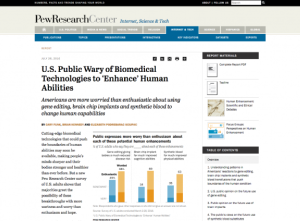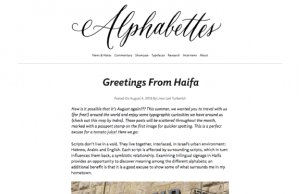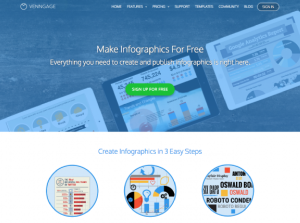 |
August 5, 2016 Volume 22, Number 30 |
Research and Education |
General Interest |
Network Tools |
In the News |
Research and EducationBack to Top | |
 |
|
 |
|
 |
|
 |
|
 |
|
 |
|
 |
|
 |
|
General InterestBack to Top | |
 |
|
 |
|
 |
|
 |
|
 |
|
 |
|
 |
|
Network ToolsBack to Top | |
 |
|
 |
|
In the NewsBack to Top | |
"Zombie" Anthrax Wreak Havoc in Rapidly Warming Siberia | |
|
Anthrax sickens 13 in western Siberia, and a thawed-out reindeer corpse may be to blame Anthrax outbreak triggered by climate change kills boy in Arctic Circle "Zombie" Anthrax Goes on Killing Spree in Siberia--How? Thawing of permafrost may disturb historic cattle burial grounds in East Siberia Sinkholes in Siberia Raise and Climate Change The Nenets of Siberia In 1941, thousands of reindeer perished in the Yamal region of Siberia due to an anthrax outbreak. This summer, the deadly microbe has re-emerged after a season of record warm temperatures in the region. Scientists believe that this warmer weather - marked by temperatures approximately 10 degrees Fahrenheit warmer than usual - likely caused the frozen carcass of a reindeer killed by the 1941 plague to thaw. Bacillus anthraces, the organism that causes anthrax, is able to survive for years in cold temperatures thanks to the thick, protective protein shell of its spore. Once warmed up, anthrax can again become active and infect livestock and humans, leading some to dub this outbreak one of "zombie anthrax." Over 2,000 reindeer have died as a result of this outbreak, and dozens of people - including 41 children - have been hospitalized. Those affected are members of the Nenet tribe, a nomadic indigenous community in the region. Tragically, a young boy died from the outbreak earlier this week. Scientists fear that the unthawing of additional carcasses may cause even more outbreaks in the future. [MMB] The first link takes readers to a Washington Post article by Ben Guarino that summarizes the recent anthrax outbreak. Next, readers will find a more recent update, including confirmation of a 12-year-old boy's death, from Alex Luhn at The Guardian. The third link takes readers to an article that appeared in Scientific American earlier this week that outlines the science behind "zombie anthrax." Readers will also find a scientific study that appeared in Global Health Action back in 2011, in which a group of scientists provided evidence that a future anthrax outbreak in Siberia was possible due to thawing cattle corpses. Moving along, the fifth link takes visitors to a page from PBS Learning Media about sinkholes in Siberia, another consequence of warming temperatures in the region. This page includes a short NewsHour clip about the sinkholes along with accompanying classroom resources about climate change in the region. Finally, readers will find a collection of powerful photographs of the Nenet community in Siberia that appeared in The Atlantic in 2012. | |
